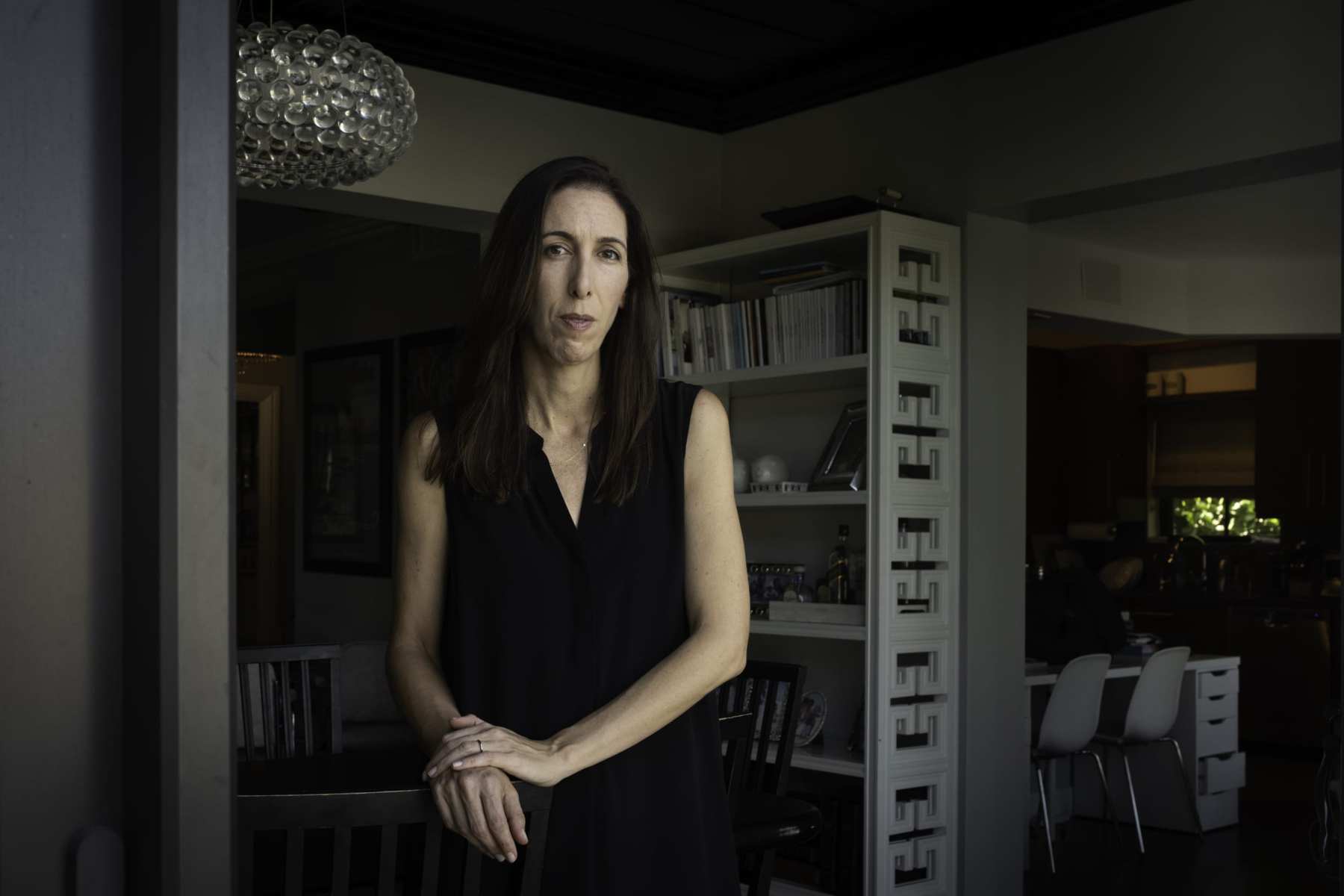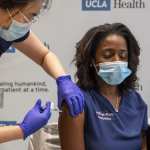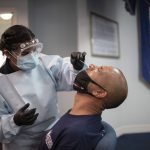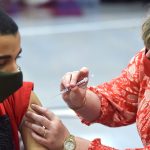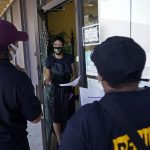On January 21, 2020, the United States had its first confirmed COVID-19 case, weeks after the virus had spread through Wuhan, China, and just as South Korea recorded its first case of the virus. But much of the nation didn’t feel the weight of the crisis until March 11, 2020 — exactly one year ago.
That day, the World Health Organization declared COVID-19 a pandemic. The NBA announced it would suspend its season. In a White House address, former President Donald Trump announced new travel restrictions between the United States and the European Union, urging Americans to wash their hands and stay home if they felt sick. Across the country, offices began telling employees to work from home. Cities and states adopted a patchwork of new social distancing measures.
In the early stages of the pandemic, we knew very little about the coronavirus. With scant scientific consensus about how it spread or how to combat it, the nation plunged into a year that has been marked by uncertainty, fear and grief.
Since 2020, about 118 million people have contracted COVID-19 and more than 2.6 million people worldwide have died from it. There have been more than 29 million COVID-19 cases here — the largest figure for any single nation. More than 527,000 died in the United States, far more deaths than any other country has reported.
And for women and LGBTQ+ people, the devastation has been acute, sprawling well beyond the immediate concern of contracting the virus. They are more likely to have lost work in the pandemic-induced recession. More have reported mental health challenges, including anxiety and depression. Black women and Latinas are heavily represented in frontline worker roles, essential positions that increased their exposure to the virus. Now, even with the upswell in COVID-19 vaccines — President Joe Biden has promised to have enough vaccine supply for every American adult by the end of May — the pandemic’s burden still feels insurmountable to some.
To better understand the immediate and long-term effects of the crisis, The 19th reconnected with eight women who we reported on earlier in the pandemic. Some had experienced mental health struggles. Others had lost work. They battled everything from anti-Asian attacks to the coronavirus itself.
These women shared with The 19th how the past year has reshaped their lives — for better and for worse — and delved into their hopes and fears about the next few months, including what life could look like after the pandemic’s end.
On the frontlines
As much of the country has shifted to endless Zooms and at-home offices, many people’s incomes depended on continuing to show up in-person throughout the pandemic. Women make up the bulk of these frontline workers.
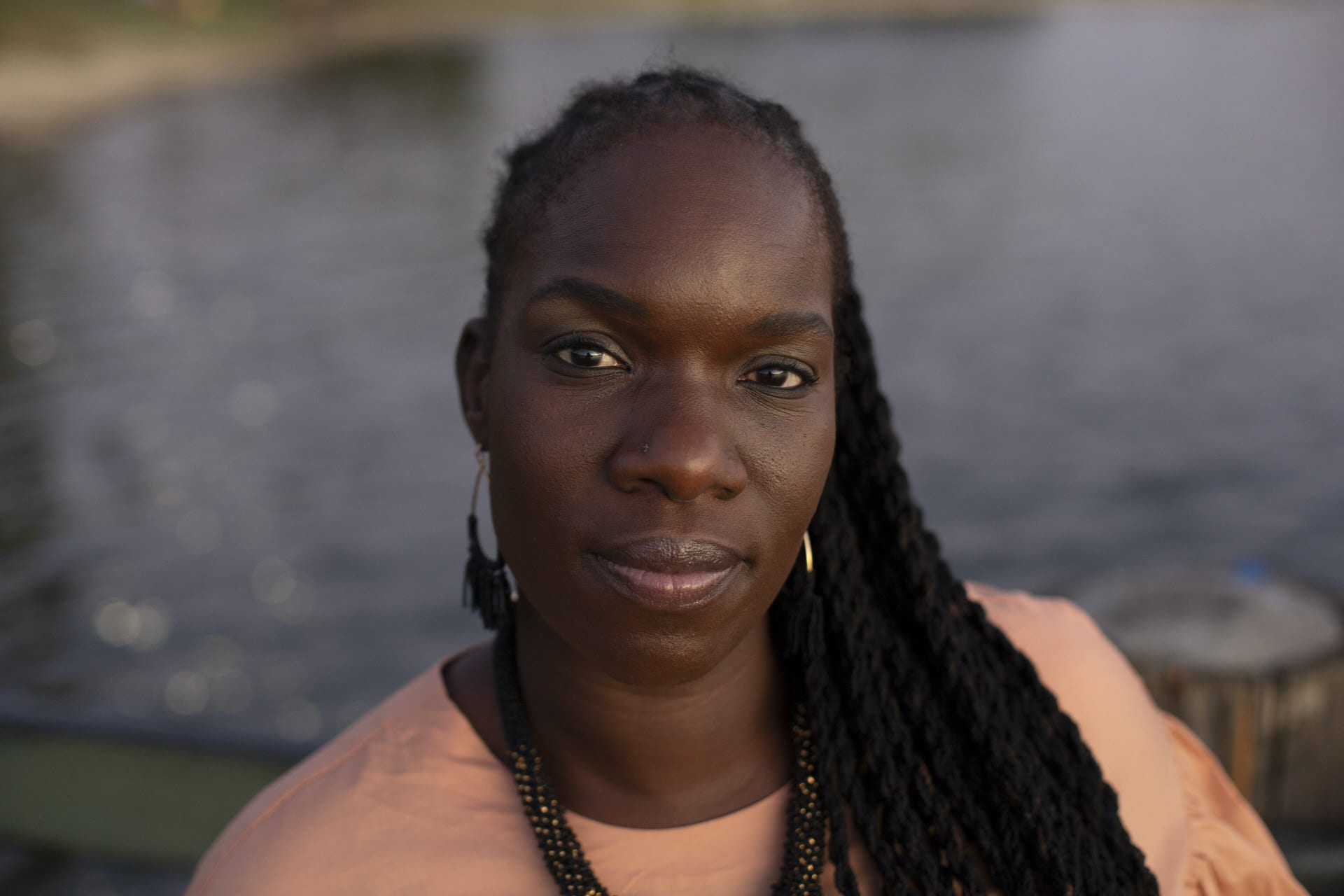
Dr. NanaEfua Afoh-Manin, 43
A year ago, Dr. NanaEfua Afoh-Manin started setting up pop-up coronavirus testing sites in disadvantaged Los Angeles neighborhoods to try to reach people of color before they ended up in her emergency room.
Now, those pop-ups are turning into vaccination sites.
After 31 successful events in 2020, Afoh-Manin is partnering with the Los Angeles County Department of Public Health to distribute vaccines to communities that would otherwise struggle through the process because of barriers to access — from reliable transportation to skepticism over the effectiveness of the shot.
“In the popular narrative surrounding the COVID-19 vaccine, most of the public is pigeonholed into one of two groups: Either they are eager for the vaccine or hesitant to receive it,” Afoh-Manin said. “This simple binary does not represent the entire population or the complexity of the public’s understanding of the COVID-19 vaccine.”
Instead, the team at Afoh-Manin’s nonprofit, Shared Harvest/myCovidMD, is focusing on a different approach to help build confidence.
“The way we see it, it is about both access and reliability, “she said. “To counteract the health inequities that prevail in our country, we both have to ensure that these communities have equal opportunities for vaccination and that there is education provided to ensure that each individual feels comfortable trusting the science behind the approved COVID-19 vaccines.”
Dr. Kakra Gyambibi, interim chief of staff and the clinical community health partners coordinator for the nonprofit, said part of that is meeting people where they are and providing a venue for them to ask questions.
Both she and Afoh-Manin were recently vaccinated and have gone through their own share of coronavirus deaths. Gyambibi lost an uncle. Afoh-Manin a colleague. And that loss compounds: They spend most of their time speaking to others about their own grief. Gyambibi is one of the doctors who calls patients back when they test positive, and oftentimes they tell her about other people in their families who are sick or gone.
“You realize people have a story, it’s not just dots on a screen,” Gyambibi said. “They were important and somebody’s ‘only’ at one point.”
As community organizers, Gyambibi and Afoh-Manin also feel the weight of their responsibility in a different way this year. It’s proving that they are here to stay, that they didn’t “hit it and quit it,” Gyambibi said.
Afoh-Manin sitting at the table with the department of public health is also important, Gyambibi said, not just because she has a seat, but because she has a voice.
“Dr. Nana is that voice to say, ‘Look, we’ve done it. We have been able to mobilize, we’ve been able to get these communities you were not able to touch. We have proof, so give us the opportunity to show you,’” Gyambibi said. “It’s not because folks are ‘hesitant.’ It’s because they don’t see themselves in you all. That is so important: Can I see you? Can you see me?”
— Chabeli Carrazana
Maria Reyes, 53
She still can’t fathom the end of the pandemic.
Maria Reyes doesn’t know when she’ll get a vaccine — she’s too young to qualify for the immunizations that are being distributed primarily to adults older than 65.
“It’s also difficult for the people who are older,” she said in Spanish. “You have to make an appointment. There aren’t enough.”
Because of the pandemic, Reyes, who typically works cleaning houses in Hidalgo County, Texas, has seen her income dry up over the past year. She used to be full time, but now only has one day of work per week. Her husband, who works at a local factory, is still going into work full-time.
A few months ago, Reyes and her family developed COVID-19. They’ve recovered, she said, but she still feels tired and hasn’t fully regained her appetite.
The worst thing about this past year, she said: She still doesn’t know when she’ll be able to safely see her children, let alone all 10 of her grandchildren. For now, she does what she can to feel better: yoga, jogging in place inside her house and praying.
“I miss my family — my sons, my daughter, my grandkids,” she said. “My grandkids are my life.”
— Shefali Luthra
A mental health crisis in the making
Depression and anxiety were already higher among women and LGBTQ+ people before the pandemic. But as the country shut down, resources and critical support systems only became harder to access.
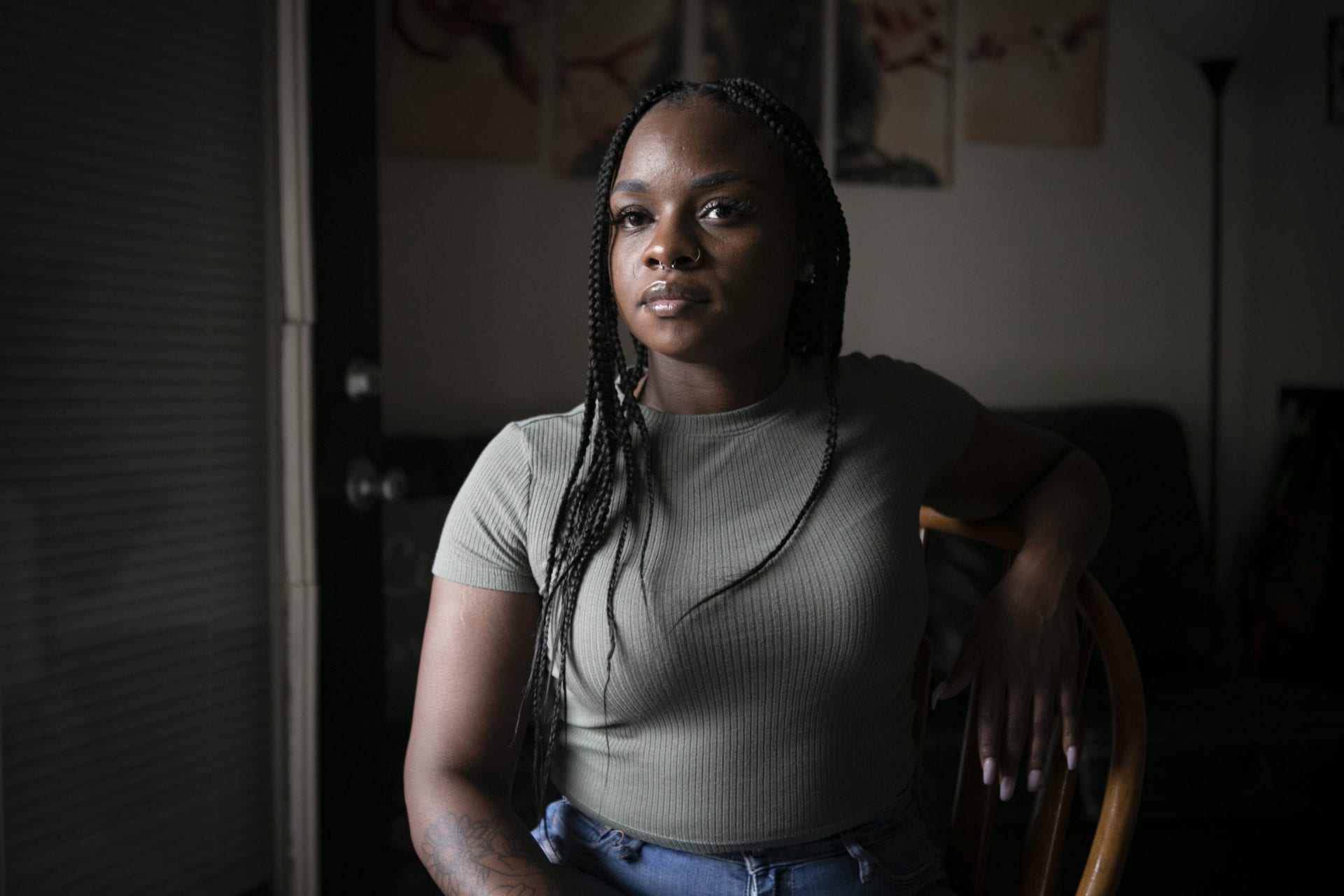
Kam-Mira Joy Edwards, 32
In August, Kam-Mira Joy Edwards had stopped menstruating from stress and was dealing with unending headaches. The stressors abounded: isolation, fear of COVID-19 and economic uncertainty. She was also caring for her two children and her father, going through a divorce and still processing the recent death of her sister.
In the past year, Edwards moved from Virginia to California to be closer to her family. After months of mental health struggles, she’s been able to book a therapy appointment. Edwards works for a state contractor processing COVID-19 tests. It’s a frontline health worker job that qualified her for early access to the COVID-19 vaccine, which she received both doses of in February.
Things seem to be getting better, she said. Her divorce is finalized, and she’s trying online dating. Her two children, who are still in Virginia, will move to be with her later this year. And the new development of coronavirus vaccines means someday the pandemic will end — she’ll be able to see friends. She’ll feel a bit less lonely.
Edwards never contracted COVID-19, and none of her loved ones died of the virus. Still, she said, there’s no erasing how this past year has changed her — she’s sadder, more tired — or everyone else.
“Even if we try to wake up tomorrow and COVID is gone, our lives are different. They’re shaped differently,” she said. “There’s a lot of mourning. There’s so much death around, and everybody feels it — even if it’s not attached to them.”
— Shefali Luthra
Carly Evans, 42
After a year of the pandemic, Carly Evans is trying to practice grace — with her children and with herself.
Evans teaches English and drama at a Massachusetts high school, which has adopted a “hybrid” approach to learning. She spends part of the time on campus, and part of the time at home, and lesson plans could change overnight if new COVID cases emerge. On the day she spoke to The 19th, the district has reported more than a dozen new coronavirus cases in the past 24 hours.
Evans is a mother of three children, who are also in partially remote learning. Two are young enough that they require her supervision with their online schooling. Whether with work, parenting or her own life, she’s trying to be gentler.
“I find myself being much more understanding of a lot of things. Other moments where I would have gotten angry and upset, being like ‘Nope, that’s not worth it,’” she said. “It’s self-preservation.”
Recently, that meant letting her daughter log off school early to play outside on a February snow day.
Evans has also worked to resume her weekly therapy appointments — she’d fallen into a habit of canceling those appointments last fall, when everything became too much. Still, she said, it’s “really hard” to take any time for herself.
Since we last spoke, Evans has a new responsibility: trying to find a vaccine appointment for her 65-year-old mother, who lives with the family and has medical conditions that increase her risk of COVID-19 complications.
“It needs to happen yesterday,” she said.
Despite Evans’ role as an educator — a group the Centers for Disease Control and Prevention recommends be prioritized for coronavirus vaccination — she doesn’t yet know when she herself will get her immunization. Massachusetts has only just opened up vaccine sign-ups for teachers.
“I want to be patient, and I don’t want to be one of the people who jumps the line,” she said. “There should be a rhyme and reason. But I’m having a hard time seeing the rhyme and reason, I think.”
— Shefali Luthra
‘Dreaming and hoping for a better future’
Instances of racist anti-Asian attacks have seen an uptick during the pandemic: In the country’s 16 most populous cities, anti-Asian hate crimes in 2020 rose 150 percent over the previous year.
Jenny Wang, 37
Jenny Wang has spent the last year helping people shift their focus from “what if” to “what is.” The Houston-based clinical psychologist names uncertainty as one of the biggest triggers for clients over the last year. How could we plan for the future? How do you manage burnout, especially for mothers?
“I think in those early months, there was kind of a crisis mode, where we were operating out of the sense that this hopefully was a short term or kind of for-the-foreseeable-future type of situation, but that there would be an end, hopefully in the next few months,” Wang said. “And I think now looking back and realizing it’s been a year, it certainly gives pause to this idea that our human minds are not capable of being in crisis mode for an entire year.”
On top of this anxiety, Asian Americans have increasingly been targeted in racial attacks and hate crimes during the COVID-19 pandemic. Many have drawn connections from former President Donald Trump’s xenophobic rhetoric about the virus to the spike in anti-Asian rhetoric.
Wang’s also been dealing with this personally: Her eight-year-old daughter was the victim of a racist gesture at school last year.
For Wang, who manages “Asians for Mental Health,” an Instagram account that includes a directory of Asian, Pacific Islander and Desi therapists, has witnessed her community highlight long standing racism that she says had been rendered invisible before this spike over the last year.
“We have videos, we have visible accounts that we were able to share to amplify our voice, but Asian Americans have been suffering from racism for generations,” she said. “And so as a clinician, I am seeing it on the one-to-one level working with clients. But I’m also observing and exposed to a collective re-traumatization of our community.”
In January, President Joe Biden signed an executive order that directed the Department of Health and Human Services to consider issuing guidance describing best practices to advance cultural competency, language access and sensitivity toward Asian Americans in the federal government’s COVID-19 response, and for the Justice Department to work with Asian American communities to prevent hate crimes and harassment.
Wang is also making room for hope, which has come, in part, from a sense of solidarity with other communities of color that have carried heavy elements from protests and disparate COVID-infection and death rates. People reaching across faith, race and different elements of identity to show empathy and compassion makes her feel like her daughter will inherit a better world.
“If there’s no hope, then what are we fighting for?” Wang said. “What are we moving towards if we are not dreaming and hoping for a better future or tomorrow?”
Most recently, that’s taken the shape of advocating for her daughter’s elementary school to celebrate Asian American Pacific Islander Heritage Month in May. Following a Black History Month assignment for her second-grade class, Wang’s daughter asked if there were any other months for other kinds of people.
“Though what happened to my daughter a year ago was extremely painful, it also was extremely galvanizing for our family to talk about these issues and think about how we could make changes in the spheres of influence that we have,” Wang said.
— Ko Bragg
Alexandra Mei, 27
Over the past year, Alexandra Mei found strength.
She held it together when her father was initially trapped in Europe for a few weeks with a cold, as travel restrictions hammered down this time last year. She’s been a pillar for her architecture students, providing them leniency in a difficult time. And she’s leaned into supporting her partner, a surgical resident who sometimes cares for COVID patients.
But most of all, she practiced resistance. Around this time last year, Mei and her friend Diana Tao launched a petition and Instagram platform to denounce anti-Asian violence that ratcheted up as the coronavirus took hold. “Chinese American Voices” has since grown to a community of nearly a thousand where Mei and Tao invite followers to share the story behind their Chinese given name or how people celebrate Lunar New Year to name a few recent Instagram callouts on the page.
“It’s almost like a form of resistance in a way to show that there’s more to Chinese Americans than getting violently attacked on the street,” Mei said. “There’s a whole culture behind our identity that people are not really seeing yet, because all the stories that Chinese Americans right now are focused on these violent attacks which, like, rightfully so. But we need to get more coverage out there in the news — we can’t just be victimized constantly.”
Amid all of the unmeasurable ways the pandemic has reshaped our lives, Mei changed, too. She found surer footing in her identity as a Chinese American. During the Chinese New Year, for example, Mei posted to Instagram a box of snacks from her mom (crackers, Hello Panda cookies, a rice cake called nian gao, oranges, a red envelope and a few face masks). This is a regular tradition between mother and daughter, but this year, it resonated with Mei differently. As her friends commented and complimented the gift, Mei felt a shift in herself, as others celebrated a culture she’s proud of. Fostering a community for other Chinese Americans, Mei felt the desire to showcase, celebrate and center her culture more so than she would have a year ago.
“Because of the generation I grew up in in terms of Asian Americans, it was always an effort to assimilate a little bit better. But now I think I don’t want to do that at all,” she said. “And I get really excited when there are parts of me as a Chinese American that I can tell people and make kind of make my differences known.”
— Ko Bragg
A shift in having it all
Women disproportionately lost work during the pandemic. Although many were forced out of the workplace by a stricken economy, others had to scale back or leave their jobs altogether to take care of their children.
Ellu Nasser, 42
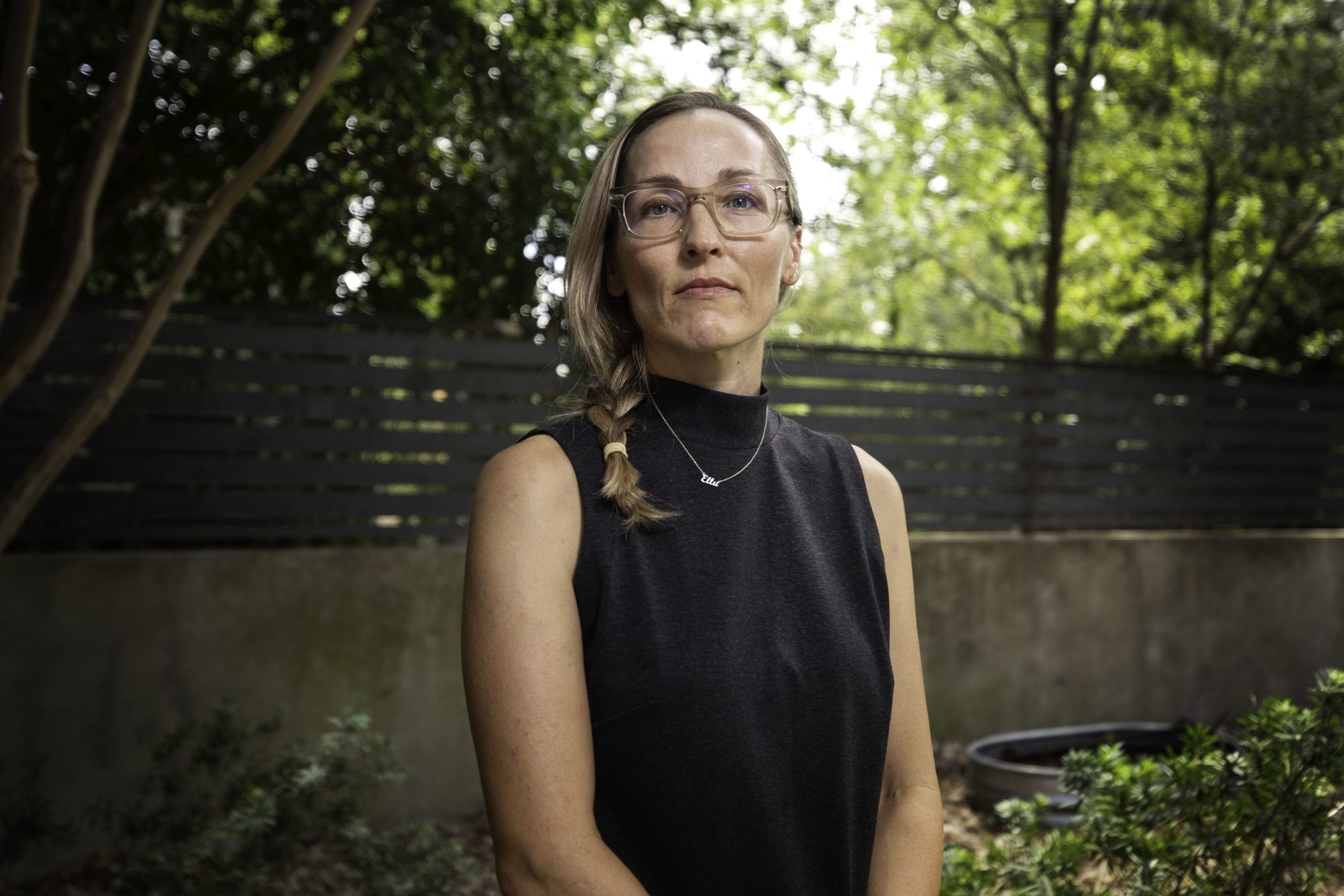
Since quitting her job as a consultant in Austin to care for her children, Ellu Nasser has returned to consulting full-time, a shift that helped her regain the feeling of “being productive and being a contributor” that she lost when coronavirus and school closures forced her to leave the workforce.
For the hundreds of thousands of women who were forced to make that decision, many, including Nasser, have said it felt like losing parts of their identities.
Being able to rejoin the labor force was a moment of celebration for her — but it came with mixed feelings. In the past year, she has often thought about the path her experience with the pandemic has taken. She was lucky — her youngest son was able to join a learning pod and her eldest stayed in school. Her family had the resources to weather the challenges they faced.
That has created a sense of guilt that has been common throughout the pandemic as some bounce back faster than others.
“I had this big reframe,” said Nasser, 42. “I was like, ‘Wait a minute, I have resources.’”
That doesn’t mean it was easy. Her husband is a doctor on the frontlines who she said has been working more than ever this past year. He recently got vaccinated, providing their family some relief. She has also been working more hours than ever and putting most of her focus on her two sons to ensure they have the support they need.
“We have done everything for kids. Any risks we take are our kids going to school or our kids playing a sport,” Nasser said. “That’s also been a reframe of just this total gratitude for every little, teeny tiny thing we’re able to provide or do.”
— Chabeli Carrazana
Mara Geronemus, 43
Last summer, Mara Geronemus was looking at the possibility of her law career slipping away. She had worked to open her own practice, but the pandemic and the child care demands for her three children — ages 7, 10 and 12 — had forced her to close her Miami Beach office. She cut down work, wondering how the decision would follow her into the future.
But then, she heard that her kids’ schools would be resuming in-person classes by the fall.
“Once I knew they were going back to school, I felt like I could breathe again,” said Geronemus, 43.
Of course, things haven’t gone back to the way they were. Geronemus, who was pulling all-nighters during the start of the pandemic to keep her kids on track with remote school, has still had to adjust her hours so she’s done by about 3 p.m., when they return home. The myriad after-school activities that kept them occupied and allowed her to work are mostly not back, and her kids now demand more of her time. The pandemic has made them “lonely and cranky and tired,” she said.
“The only piece that is not better than before, but will get better, is my kids’ mental state,” she said. “They are really needy, and they are not needy kids and they weren’t before.”
To help, her husband has been taking on more of the child care, agreeing to leave the hospital where he works as an interventional radiologist earlier, if needed, for the kids. Geronemus said she felt like the past year opened a line of communication between them that hadn’t been there before about the challenges of child care that often fell to her, because she had the more flexible job.
“It’s really forced me to ask for help when I need it and not try to bear all of the burden alone,” Geronemus said.
Now that her husband and the children’s grandparents are vaccinated, Geronemus said she feels like has her support system back.
“It gives more child care options, and the kids are happier,” Geronemus said.
She is, too.
— Chabeli Carrazana
